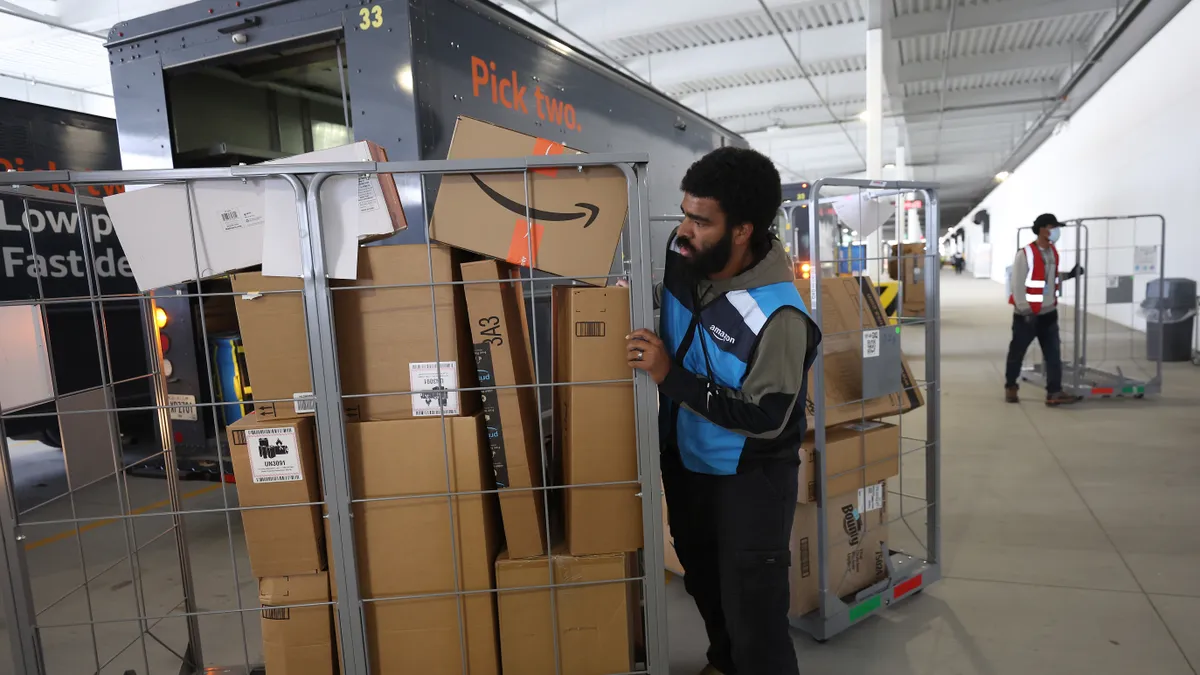Amid layoff news and union tugs-of-war, Amazon is chugging ahead with its on-the-job learning and development program. Titled “Upskilling 2025,” Amazon leadership designed the program to aid talent in cultivating “in-demand skill sets and propel them into new careers.” The initiative was launched in 2019, and houses its prepaid tuition program Career Choice and its Technical Academy helping non-technical workers transition into software engineering.
Some of the tech training is high-level: For example, the company’s User Experience Design and Research apprenticeship program spans the finance and retail departments, and touches Prime Video and Alexa. Other L&D initiatives such as the Grow Our Own Talent program addresses entry-level talent “with non-traditional backgrounds.”
There are also programs for talent in the middle: Amazon partnered with the U.S. Department of Labor on a robotics program that aims to increase workers’ wages up to 40% in phase one and up to 88% in phase two.
Amazon’s talent strategy is deeply imperfect, critics and employees have said, but its L&D offerings remain noteworthy. For two years in a row, LinkedIn has named the retail and tech company its no. 1 “best workplace to grow your career” in the U.S. In early 2022, Amazon granted its then-750,000 hourly employees free college as well as free ESL classes. Later in the year, the e-commerce retailer added tutoring services and digital nudges to its educational offerings.
L&D facilitators and people operations professionals can take a leaf out of Amazon’s book by asking themselves, “How can our training programs benefit our workers now? And what skills can ready them for the careers of the future?’”
Smaller research firms and the Bureau of Labor Statistics agree that tech skills are increasingly in-demand in the U.S. BLS identified “software developers” as one of the top three categories of new jobs being created from 2021 to 2031. It’s a niche that will add approximately 370,600 jobs over the next decade, the BLS predicts.
Likewise, the labor bureau identified wind turbine service technicians, data scientists, information security analysts and statisticians within the projected top 10 fastest-growing occupations in the U.S. heading toward 2031.
More than creating a talent incubator or a stepping stone for an inevitable exit, HR may be able to strengthen its talent pipeline by getting serious about L&D. A Gallup study, commissioned by Amazon and published in its most recent Upskilling 2025 report, suggested that 57% of Americans are “very” or “extremely” interested in updating their skill set. Likewise, within the cohort of workers interested in upskilling, 69% told Gallup that they were either “extremely” or “very” likely to “leave their job for upskilling opportunities provided by another employer.”
Outside of that study, a Society for Human Resource Management report confirmed that, second only to pay, lack of career development and advancement have been driving talent turnover. Throughout 2022, HR pros told Willis Towers Watson and other research firms that reskilling and upskilling were top-of-mind retention, attraction and cost-cutting strategies.
Together, those studies suggest investments in tech upskilling and developing solid programs today may help both the organization and talent in the long run.













